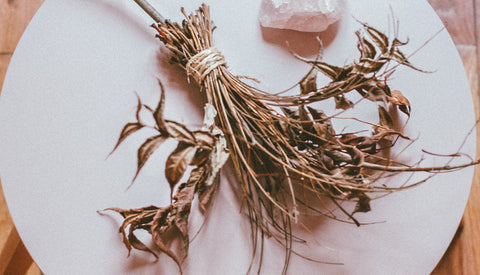Winter is approaching, the cold is coming, the sun is going away.
The radiators come on, the windows close. And remain closed.
Our health is starting to want to surrender to all of this, but we're staying strong! (or at least we try hehe)
One of the main health risks during the winter period is, in my opinion, a bit overlooked though. These are indoor air pollutants.
We don't realize it, but indoor air pollutants are very harmful to health, so much so that they are ranked among the top five environmental risks to public health. These pollutants accumulate and hang around in quantities far greater than we would need to breathe in when an environment is stagnant and closed. Living and working in places that look contaminated and poorly ventilated can cause headaches, dizziness, nausea, and eye, ear, and nose irritation.
The big problem is that it's 2 degrees outside and we feel so good inside...we don't want to leave the windows open and shiver with cold all the time.


In addition to purifying the air, plants give life to our homes
Fortunately for us NASA, in 1989, got involved! Not for us - simple earthlings - of course, but for its cosmonauts who remain locked up for several days in space capsules without any ventilation. Their space solution was simpler and easier than expected: using indoor plants to purify the air.
We've known for a very long time that houseplants are great air purifiers, but nothing like a NASA certificate, right? We also know that some of them are more effective than others in filtering pollutants and toxic chemicals from the air. I have selected some of the plants recommended by NASA, the ones that I know well and which are also my favorite anti-pollution plants! I'm going to tell you a little about each one so that you can have them at home in peace and know how to maintain them.

The five harmful molecules in the air of our homes
1. The Boston Fern
According to astronauts, ferns filter out Formaldehyde and Xylene, two chemicals that are always present in indoor air and cause great harm to our health.

The Boston Fern is one of my favorite plants because it is almost prehistoric and very easy to maintain. Magnets of shade, humidity and heat, no need to expose them to the sun! You only have to give it water once or twice a week during the winter and twice during the summer. She also loves that we sprinkle water sometimes, so her leaves stay green and the air will be more and more purified! In addition, the Boston Fern is not expensive and very easy to find in France.
2. The Spider Plant

This plant native to the south of the African continent inhibits the same pollutants as the Fern (and carbon monoxide in addition). Its maintenance is however a little bit different: the spider is a plant that likes light – but not necessarily direct sun – and it is given less water than the Fern. For a temperature of 20 degrees, give it water once a week. If it is warmer, do not hesitate to mist its leaves. It's a plant that is still very tolerant of forgetting to water, and that's why I recommend it: it's a warrior!
3. The Bamboo Palm
Another plant that is easy to care for, this subtropical bamboo native to humid and warm forests remains very tolerant of different climates: It appreciates a semi-shaded position, while possibly supporting full sun. However, it prefers a fairly humid atmosphere, so if your radiator is on full blast, mist it once a week, in addition to giving it water for its roots.

The little bamboo from our house with the wooden support we made for it
4. Mother-in-Law's Tongue
(I love the plant, I hate its name)

This plant has become very trendy in recent years. Why ? Because in addition to being very beautiful and defending the air from four of the five most harmful molecules found in NASA spaceships, the snake plant regulates the ambient humidity of the house. She does all of this and really asks very little of you in return. It is originally a desert plant, but it adapts to our apartments in an exemplary way. Just place it in a well-lit place, preferably out of direct sunlight – near a window is perfect. As far as water is concerned, the tongue is not a drinker: once a week if it is over 25 degrees and once every two weeks in winter.
5. The Dragon Rider Dracena
Finally, the most powerful purifying and easy-to-maintain plant. Of the five main indoor air pollutants, the dragon tree manages to absorb and trap them all!

This large shrub with evergreen and dense foliage native to Madagascar and tropical Africa is distinguished by its upright green foliage bordered with red. The most popular of the Dracenas needs good light, although it tolerates lower light as well. To water it, once a week in summer and once every two weeks in winter. It should be noted that the leaves of dracaena tend to accumulate dust. The leaves should then be cleaned with a damp cloth.
Other popular herbs exist to purify the air, including Peace Lily and English Ivy among others. If you want to read more about what the NASA report says, the pdf of their study is available online here: https://ntrs.nasa.gov/archive/nasa/casi.ntrs.nasa .gov/19930073077.pdf





